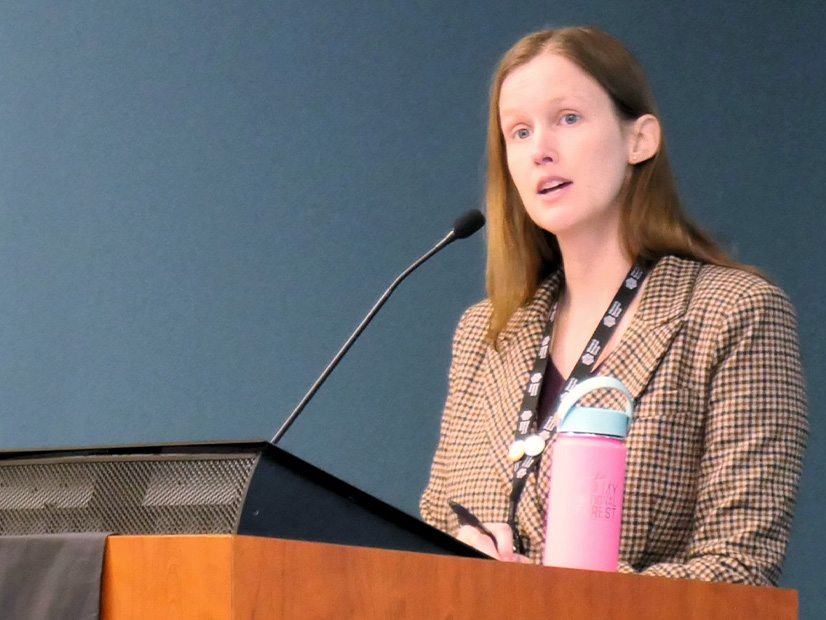CARMEL, Ind. — After completing its initial economic and reliability analysis, MISO has found that numerous overloads and congestion await its system if it doesn’t recommend a second long-range transmission plan (LRTP) portfolio.
“Keep in mind this is the start of the analysis. There’s much more work to do to translate these studies into transmission lines. So, expect to hear overloads today, not transmission projects,” Executive Director of Transmission Planning Laura Rauch told a Nov. 15 Planning Advisory Committee meeting.
That said, MISO found “significant” overloads and congestion on the system when it applies its envisioned 2042 resource mix in studies. Rauch said she expected the study results to show problems in the system.
Rauch said the second LRTP portfolio likely will shape up to be a “more complex solution” than the first, $10 billion LRTP portfolio. She said MISO’s analysis by 2042 found lines reach stability limits instead of just thermal limits and foresees a greater need for reactive power.
Rauch said MISO may have an idea of some projects by early spring.
“I would say at this point, all solutions are still on the table,” Rauch said of project sizes and voltages.
Rauch said MISO’s West Region — Minnesota, Iowa, Wisconsin, North Dakota and portions of South Dakota, Montana and Michigan’s Upper Peninsula — showed a need for higher-voltage transmission facilities to “support large power transfers and enable generation resources from remote areas to be delivered to load centers.”
By 2042, MISO found 20% of the facilities in the West Region will be overloaded, with annual generation curtailments exceeding 15%.
On the other hand, MISO said its Central Region — most of Illinois and Indiana and portions of Kentucky and Missouri — will be instrumental to supporting system transfers. It said about 10% of the Central Region’s facilities will be overloaded by 2042 without significant transmission expansion.
Rauch also said she expects MISO will have “additional challenges to solve” in the Central Region based on anticipated weather patterns and expanded transfer needs.
Finally, MISO’s East Region —most of Michigan’s Lower Peninsula — will need increased import and export capabilities by 2042. By then, MISO said about 10% of the East Region’s facilities will be overloaded, with annual curtailments surpassing 15%.
Rauch said the overloads and binding constraint hours uncovered in MISO’s initial studies will form the foundation of its list of transmission needs for the second LRTP portfolio.
“We may not solve all of them, but all of them will be considered,” Rauch said.
Rauch also said MISO has been sharing the results of its LRTP analyses with the Independent Market Monitor, who has voiced concerns with the future energy mix MISO predicts by 2042. (See MISO Promises Analyses on Long-range Tx; Stakeholders Divided on IMM Involvement.)
The second LRTP cycle again zeroes in on MISO Midwest; the third portfolio will pay attention to MISO South needs, and the fourth will address power exchange limits between the Midwest and South regions. MISO has said while the first, $10 billion portfolio is an “important start, further work is needed to ensure reliability.”
Meanwhile, the Organization of MISO States again has hired RLC Engineering to independently assess future projects in the second LRTP portfolio. For the first portfolio, RLC arrived at a 1.4:1 benefit-to-cost ratio for projects, smaller than MISO’s overall projection of 2.6:1.
MISO will hold an LRTP workshop Dec. 1 to dedicate more discussion to its initial findings.
“We’re just getting started and looking forward to the journey,” Rauch said.




